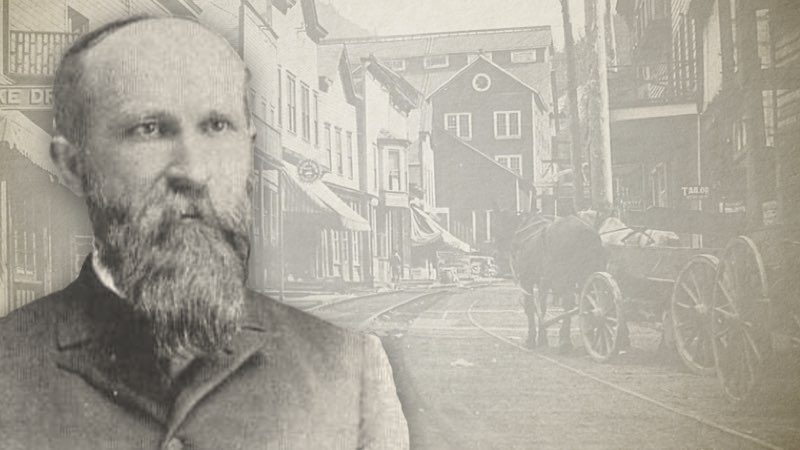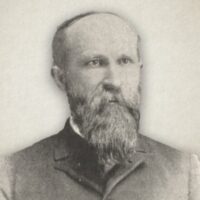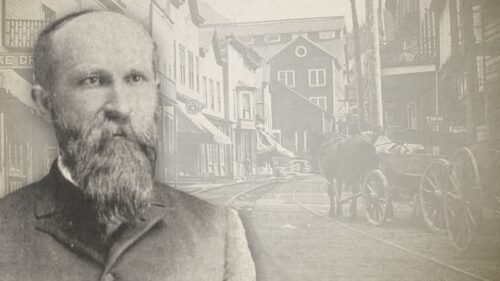
Chapter 6: Heresies and Persecutions (A.D. 34-426)
Heresies and corruptions begun to creep into the churches very early in their history. Even during the time of the apostles there was a strong tendency to introduce Jewish rites into the Christian churches, and if the apostles had not learned that “eternal vigilance is the price of liberty,” they did learn that the most untiring vigilance was necessary to preserve the churches in purity of doctrine and discipline. Man naturally desires a ritualistic service and would rather worship the seen than the unseen.
Very early in the first century some churches were found drifting away from the simple principles which governed and controlled the true churches of Christ; they became corrupt in doctrine, and introduced innovations and false practices into their worship. It may be that the corrupt churches, by reason of their want of spirituality and looseness of their discipline, increased more rapidly in membership than the true churches; or it may be because it is against the principles of a pure Christianity to resist evil with physical force, which gave the corrupt party the power over the purer churches. “We soon find, however, that Christians not only suffered at the hands of the opposers of Christianity, but suffered even more severely at the hands of professed Christians.
Some of the churches soon lost their independent character, and blending their organizations together, or perhaps striving to make one organization control a larger area of territory, they combined with the secular powers to stamp out such as would not submit to their will.
We thus see the wisdom of God in establishing the independent form of church government. When a church became corrupt, it simply dropped out of line, or coalesced with some other corrupt body, and was no longer regarded as a true church, and other independent churches were not corrupted by its doctrines. On the other hand, when the independency of the churches was lost sight of by some, and became Episcopal or Presbyterian in their form of government, an error in one part corrupted the whole body.
A.D. 202. The church at Jerusalem was soon scattered abroad, but everywhere the scattered disciples preached the word. For every martyred spirit there rose up a witness for Christ. Like scattered sparks from a fire, each one rekindled a flame, until Christianity had spread itself all over the East. As it gradually became popular, there were found two parties, one the opposing and the other the opposed. Only the true churches suffered. Orchard says of the church at Lyons, France, that as early as 202, this church suffered such severe persecutions that rivers were colored with human blood. “Severus, in 202, treated the Christians of this city with the greatest cruelty. Such was the excess of his barbarity, that rivers were colored with human blood, and the public places of the city were filled with the dead bodies of the professors. It is recorded of this church, that since its formation it has been watered with the blood of twenty thousand martyrs.”
A.D. 250. The dogma of baptismal regeneration was one of the earliest, if not the first, error which infected Christianity and this gave rise to infant baptism. We only know that infant baptism was practiced as early as A.D. 250, from the opposition which rose against it at that time. The evidence shows, however, that what was known as infant baptism at this time, was the baptism of children and not unconscious infants. This practice of the baptism of young children arose in Africa, among the corrupt party from which Tertullian withdrew. It was not observed by the stricter sect, and is given as one reason why he withdrew from the Catholic party. A great many infants were employed, we are told, as readers in in the churches, in Carthage and Alexandria. The term, infant, was applied to any one who was a minor. So infants were sometimes made bishops and presbyters, when spiritual qualifications were no longer regarded as essential to these offices. Later, boys of ten or twelve years old were made bishops.
When saving efficacy was attached to baptism, the question was asked, “What becomes of the unbaptized”? The answer was, “None are saved without baptism.” For penitents, martyrs, and others dying unbaptized, a purgatory was provided. The idea that baptism had saving efficacy gave rise to the question asked by Quintilla, of Tertullian, whether infants might be baptized on condition that they “asked to be baptized, and produce sponsors” If He replied, “That baptism ought not to be administered rashly, the administrators of it know. What necessity is there to expose sponsors to danger? Death may incapacitate them for fulfilling their engagements, or bad dispositions may defeat all their endeavors. Such as understand the importance of baptism, are more afraid of presumption than procrastination, and faith alone saves the soul.”
A.D. 250. Thus the dogma of baptismal regeneration gave rise to infant baptism, and to the provision of a purgatory, or middle place, for penitents and martyrs, dying unbaptized. This idea of the existence of a purgatory gave rise to the offering of prayers for the dead, the offering of indulgences, and the saying of masses. So we see that one evil begets another, and one encroachment upon the truth opens the way for another, until the flood gates of superstition are thrown wide open. So it was in the middle of the third century when there were two classes of churches, one calling itself the Catholic, and the others denominated by the dominant party as the Paterines, or Sufferers. Infant baptism had already been introduced, as a consequent of the doctrine of baptismal regeneration, and a purgatory was provided for the unbaptized. “At this time, A.D. 250,” says Orchard, “many of the old churches were reduced to a pitiable state; while Italy was full of dissenters, who never were in communion with Rome.”
While it is evident that infant baptism was practiced by the Catholics as early as the middle of the third century, since we find opposition to it at this time, yet there is not a single case of infant baptism on record until the year 370. Mr. Robinson, in his Ecclesiastical Researches, p. 55, says: ”During the first three centuries Christian congregations all over the East subsisted in separate independent bodies, unsupported by government, and consequently without any secular power over one another. All this time they were baptized [Baptist] churches, and though all the fathers of the first four ages, down to Jerome, were of Greece, Syria, and Africa, and though they give great numbers of histories of tho baptism of adults, yet there is not one record of the baptism of a child till the year 370, when Galates, the dying son of the emperor, Valens, was baptized, by order of a monarch who swore he would not be contradicted.” Had it been the custom of the early churches to baptize infants, there would most certainly have been some recorded instances before this time.
A.D. 300. About the close of the third century, Dioclesian, who was one of the Koman emperors, was prevailed upon by the pagan priests to inflict the most severe punishment upon Christians, in order to force them to renounce Christianity, and sacrifice to heathen gods. To this end he ordered all their places of worship to be pulled down, their books and writings to be burned, and they themselves to be deprived of all civil rights and privileges. Failing with these means to accomplish his purpose, he ordered all pastors and bishops to be imprisoned. All sorts of torments were then employed, which lasted ten years, and it has been estimated that seventeen thousand Christians were put to death in one month, one hundred and fifty thousand died from violence in Egypt alone, and that five times that number, or seven hundred and fifty thousand, lost their lives through the fatigues of banishment, or in the public mines to which they were condemned.
A.D. 306. In A.D. 306, Constantine the Great became emperor of the Roman empire. Constantine was a heathen when he came to the throne, but soon afterwards embraced Christianity, and an entire change occurred in the Christian world. Persecutions ceased for a time and he gave his influence to the propagation of Christianity. This period of rest, however, was of short duration, for he had allied himself with the Catholic church, which was the dominant party. Under Constantine’s directions the first general council of Catholics was convened at Nice, in the year 325. As soon as their decrees and canons were drawn up they were sent to Sylvester, who was then bishop of Rome. These decrees were afterwards confirmed in these words: “We confirm with our mouth, that which has been decreed at Nice, a city of Bythinia, by three hundred and eighteen holy bishops, for the good of the Catholic and Apostolic Church, mother of the faithful. We anathematize all those who shall dare to contradict the decrees of the great and holy council, which was assembled at Nice, in the presence of that most pious and venerable prince, the emperor, Constantine. And to this all the bishops answered, ‘We consent to it.'”
Through the influence now brought to bear upon Constantine, he instituted a series of persecutions against the dissenting churches, and denounced them as “heretics,” enemies of the truth, and destructive counsellors. He ordered all their books to be burned, that there might remain to posterity no vestige of their doctrine. Such were the trials through which the martyr churches were required to pass, in order that the brightness of their glory might shine with undimmed splendor through the centuries to come.
The Scriptures, from this time, were no longer the standard of Christian faith with the dominant party. Assemblies were called synods, and bishops fared sumptuously, so much so that a heathen prelate said, ”Make me a bishop of Rome, and I will be a Christian too.”
A.D. 326. In A.D. 326, Constantine moved the seat of government from Rome to Byzantium, and called it Constantinople. He ordered fine churches to be built, filled them with expensive pictures and images, and ordered all persons to conform to his creed. Thus under him Christianity was blended with paganism. He now united church and State, and Catholicism, with the name of Christianity, and clothed with its habiliments, was launched upon the world, but with more of heathenism than Christianity. More of pagan ceremonies than religious truth. More of bitterness and hatred than love of Christ. A form of Godliness, but denying the power thereof.
At this time the Novatians, Paterines, Puritans, Montanists, and Donatists, battling for the principles of eternal truth, and holding to the pure word of God, were giving up their lives as witnesses, or retiring before their advancing foes into the sequestered valleys of Piedmont, where they were subsequently known as Waldenees.
Author of the “Compendium Of Baptist History”. Please inform the Editor of the AHB (via the Contact page) if you have biographical information on this author. Thank you.
Shackelford on Baptist History (Complete)




